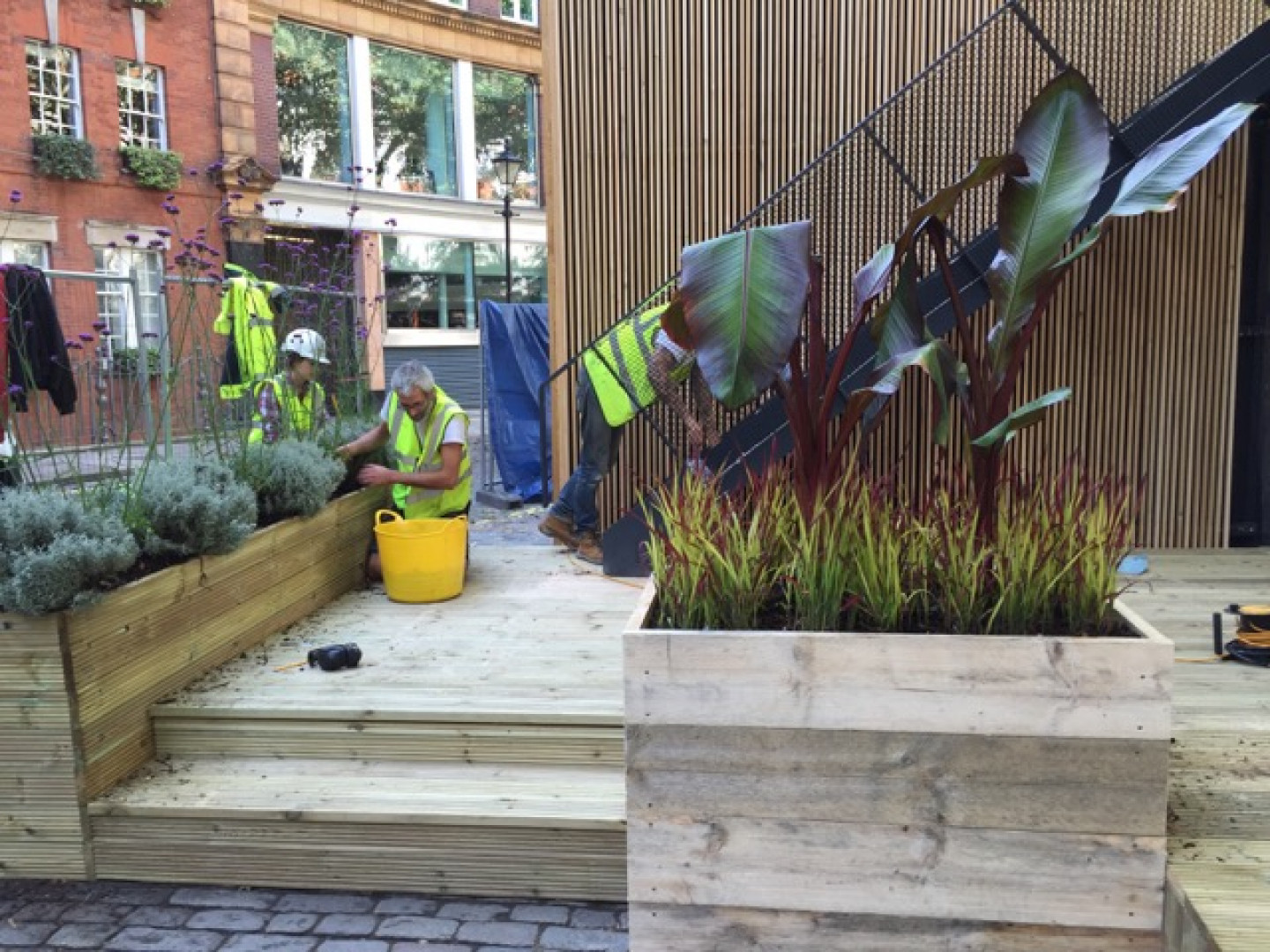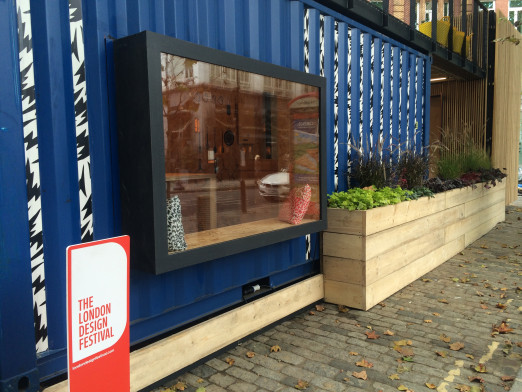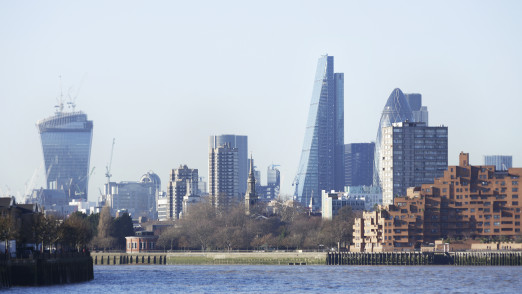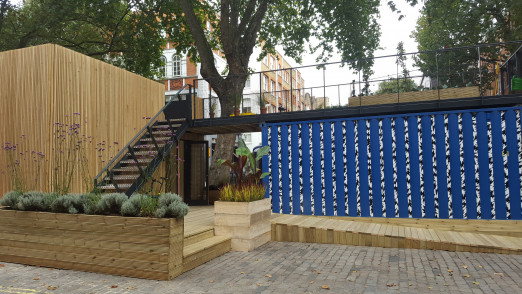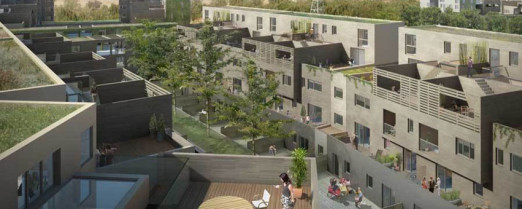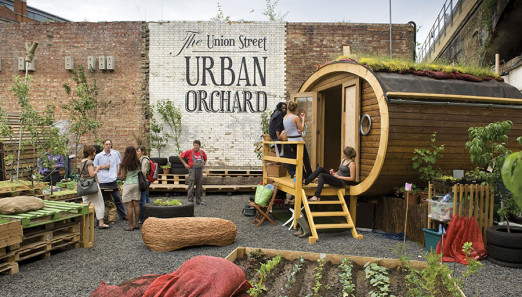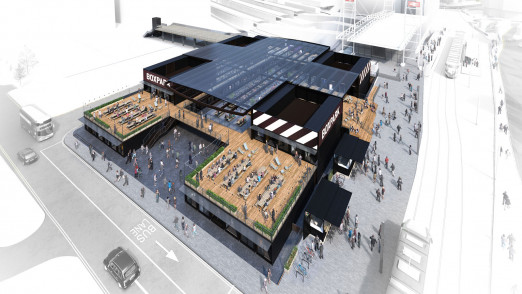Urban Growth's Bruno Lacey explores horticulture, community and the big issues addressed around A New House for London
Urban Growth Learning Gardens worked with Carl Turner Architects, Arup and The Building Centre on providing the plant life for A New House for London. Urban Growth are a social enterprise and training program. Using horticulture and gardening, they transform the life possibilities for vulnerable people for whom conventional education hasn’t worked. Urban Growth’s Bruno Lacey explained to us that it is primarily about providing education and employment, “and in the process we create these spaces which people want to be in, that then also improves the quality of life. It’s really about well-being in terms of your exterior environment, your interior environment and also the concept of creativity.” Lacey believes the care, concern and creativity involved in practicing horticulture is a transformative experience.
Though there is less of a therapeutic aspect to their work for A New House for London, the plant life is an essential fabric of the house, creating an experience of the flow of time in a temporary dwelling. In the interview below, Bruno Lacey reflects on the plant design of A New House for London, and examines how the project explores deep concerns and opportunities around housing, community and urbanism that’s effecting citizens around the world.

(Image courtesy of Urban Growth)
The issue of concern and care at the heart of Urban Growth, was that part of the plant design of A New House for London?
Bruno Lacey: We saw it as less of a therapeutic element in most of it. The ground floor for us was really about showing a variety of different horticultural styles. There are three main areas of planting, each of which is really quite different. There are tropical silly bits with the bananas and the imperator Red Baron grass – silly and tropical and not very English.
Why that ‘silly’ aesthetic?
Bruno Lacey: In the context of horticultural style I think the idea of shipping container dropping in somewhere means we were thinking, “what’s the style?” We didn’t know what the style was. As relative newcomers on the scene we also wanted to show that we could hit the different categories and that there is something for everyone there – it’s not a unified planting scheme, it’s like an exhibition of opportunities and alternatives that you could have in that space.

(Image courtesy of Urban Growth)
On the left you’ve got the very formal Santolina, silver, round almost like topiary hedges with the Verbena bonariensis poking up from it like crazy walking sticks, and that again is very architectural. That is an architectural style, considering the form, you have the very rounded shapes contrasting with the very vertical, staccato almost drunken scaffolding”
On the back you have something that’s more contemporary and in fashion, the use of the heuchera with a spectrum of colours that goes from purple to green, and the grasses is very much in the contemporary style, grass has become very popular. Low maintenance perennials used for foliage and stuff like that is a very pedestrian run-of-the-mill style of planting – we happen to have done a spectrum which is a bit different and bit out there.
And on the top you’ve got the edibles, there you have a mix of traditional English apples. It was the most difficult bit to do because a vegetable or fruit garden you normally do from seed and now is precisely the time when you’re harvesting, the plants are mature so it’s very hard to find plants. We’re hoping that the ones that are there will grow into themselves. Some are actually from community projects. We’ve taken plants from three different community projects from around south London with whom we work. Then also some stuff from the market which are much more polished and looks like they’re out of the pages of the magazine.
How does this project relate to your work on Pop Brixton with Carl Turner? And were there any reference points the other container projects?
Bruno Lacey: Other than Pop Brixton and there’s a small space at Old Paradise Yard in Waterloo, I’m not personally familiar with any specific container projects – though there are many. Pop Brixton is interesting because it’s evolving, it’s a community space serving the community, it is also short term in the sense that it won’t last for more then two or three years probably. From a gardener’s point of view it’s probably going to be looking its best just at the moment we have to take it all apart – for a nice mature garden it can take two or three years to get to that point, it’s also a totally unique site. We’re still learning the micro-climates of the polytunnel there and learning what plants like, because it’s not really a conventional space in any way.
Whereas A New House for London was more hypothetical – the idea of dropping something in, having a picture frame and then it’s gone at a certain point. So the plants will be moving from A New House for London to Pop Brixton and we will be incorporating them into the scheme there and that is part of the evolving understanding of how we want that site at Pop Brixton to work. And what to do with it in the winter and how people will use it. Pop Brixton is not a conventional gardener’s location even compared to municipal plantings in business parks and stuff like that, there is a totally different kind of engagement which we are still learning how that’s going to work.
How do you see the relationship between urban planting, architecture and the environment? What is your vision of the way those activities and spaces sit together?
Bruno Lacey: I know there’s been a lot of talk and imagination around green cities and vertical farms. I’ve met the guys at Growing Underground which is the micro-greens in a bomb shelter in Clapham.
That’s a really interesting thing, they claim it's carbon neutral, it’s using disused urban space under lights with hydroponics and they supply herbs and salads to London restaurants. There are a lot of really innovative practices going on.
When you look at places like Detroit right now, some of the most amazing practices are going on. Detroit is the opposite of London, the land has no value. What happens is that people are just creating the most amazing community farms and feeding themselves, because there are no jobs and there's very little civic structure.
It’s an incredible exercise in what was once the centre of the industrial world in the 20th century and is now the avant-garde of new forms of community organization and food growing. The difference is that in London, property is £1000 per square foot or something like that? That makes it extremely difficult to have significant gardens and increasingly I’m getting a feeling of people just wanting what I call ‘mow and blow’ – low maintenance simple stuff that doesn’t require much thinking about. Which is a shame and I think that will change.
I caught very interesting thoughts on Four Thought on Radio Four by an architect who created the Save the London Skyline campaign. There’s a real fear that we are losing what has made London so special over the past 10-15, 150 years and it does feel like there’s a bit of struggle going on. I think places like Pop Brixton are aware that a struggle is happening – where you’ve got a council, a landowner with squeezed budgets and the need to provide services to people and therefore the need to maximize revenues and that’s understandable.
But in the process they are sacrificing – and damaging in some cases – the very things that would provide that community resource. We need to keep on experimenting, trying new things and looking at new ways of partnering, not relying on the state and not necessarily looking for traditional American philanthropic model. Looking at what’s been called the Fourth Sector where you have a combination of the state, community and private investment to develop new, financially sustainable, environmentally sustainable, socially sustainable models. Hopefully places like Pop Brixton and A New House for London will be examples of that.
In terms of urban gardens or architectural planting, what kinds of plants do you think are overexposed, or overused, what kind of plants and planting would you like to see more of?
Bruno Lacey: I think green roofs are good thing and I think there’s a lot of space for innovation there which isn’t necessarily being used, because again budgets are tight.
It’s great that people are greening their roofs but I don’t think enough of it is happening. Green roofs are the horizontal surface and then you have the vertical surface to consider. If you built a building with relatively simple structures around the base, you’d be able to have green cubes – plants coming up every single surface. It’s not that there are fantastic new breeds out there or anything like that. It’s the solid performers like Virginia Creeper and Boston Ivy, closely related forms of Parthenocissus (not true ivy Hedera helix at all) – deciduous with amazing autumn colour, self-clinging and non-damaging to walls – happy in shade, unlike the next two. Trachelospermum jasminoides is a well used evergreen ‘star jasmine’ with scent, that needs wires or trellis to climb. Solanum jasminoides or 'potato vine' is evergreen, in need of some support, with masses of white (or blue in S. crispum) flowers throughout summer into autumn.
There’s a lot of really interesting research going into which plants provide the best insulating qualities and which ones provide the cleanest air. London Planes which have the very sticky large leaf surfaces do a lot cleaning the air and that’s why they survive well. And there’s a lot of really innovative research going around that, you can reduce your energy bills, you can improve the appearance of building, you can improve the quality of the building and not have to spend a fortune on maintaining or installing plants – if your priority from day one is to build it into the fabric of the building. It’s possible to retrofit in the same way. That’s where I would like to see more exploration being done.
Urban Growth’s Plant List for A New House for London
Edible section on roof:
Various Chilis / Malus ‘Flamenco’ (apple) / Various cabbages including ‘Kabocha' and ‘Greyhound'/ Various lettuces & mustards including Red Frills, Red Giant, Mizuna, Mibuna / Parsley, Coriander, Sage, Rosemary, Thyme, Oregano, Strawberries / Edible flowers, Viola (violets)
Long bed facing street:
Seven types of Heuchera in a spectrum / Pennisetum ‘Fairy Tails’ and Stipa tenuissima
Front bed:
Purple ornamental banana (Ensete ventricosum ‘Maurelii') / Imperata cyclindrica ‘Red Baron’
Side bed:
Santolina chamaecyparis (crush the leaves for amazing camphor-like scent)/ Verbena bonariensis
Low front bed:
Combination of Heuchera, Santolina, Verbena
For more info on A New House for London, click here
A New House For London has been developed by Carl Turner Architects, Arup and The Building Centre, with generous support from CBMM, as part of the London Design Festival. Global fashion and design brand Eley Kishimoto have designed internal and external graphics throughout the house. Urban Growth Learning Gardens provided all the landscaping.
